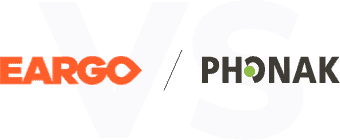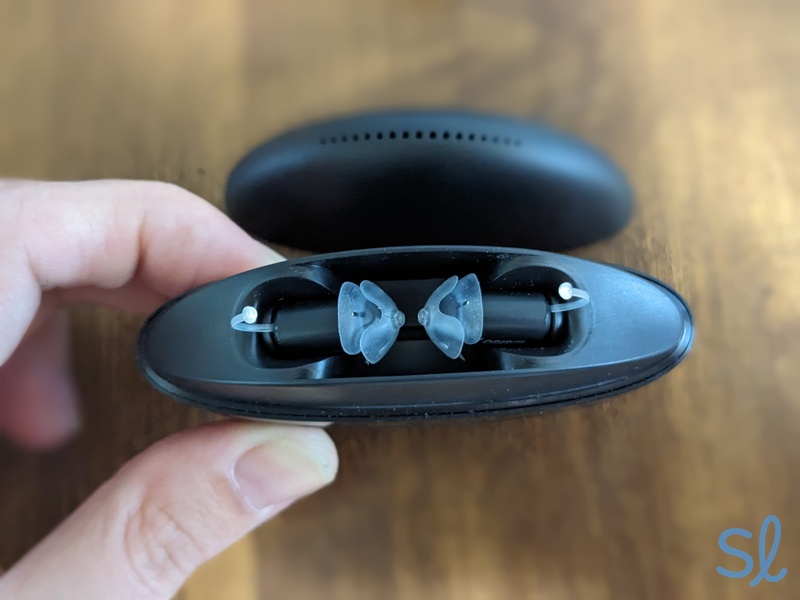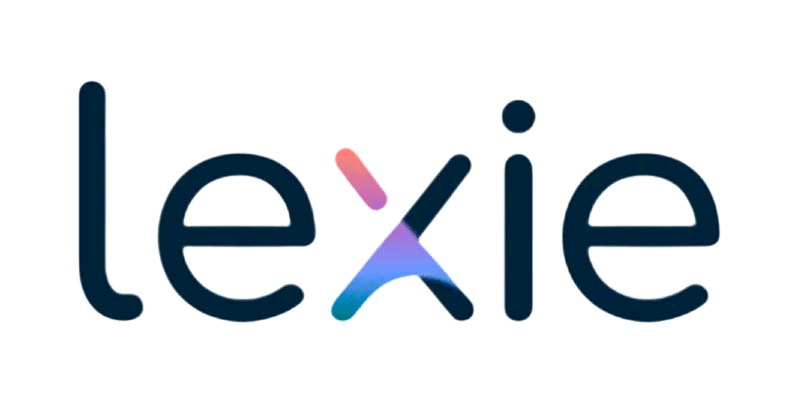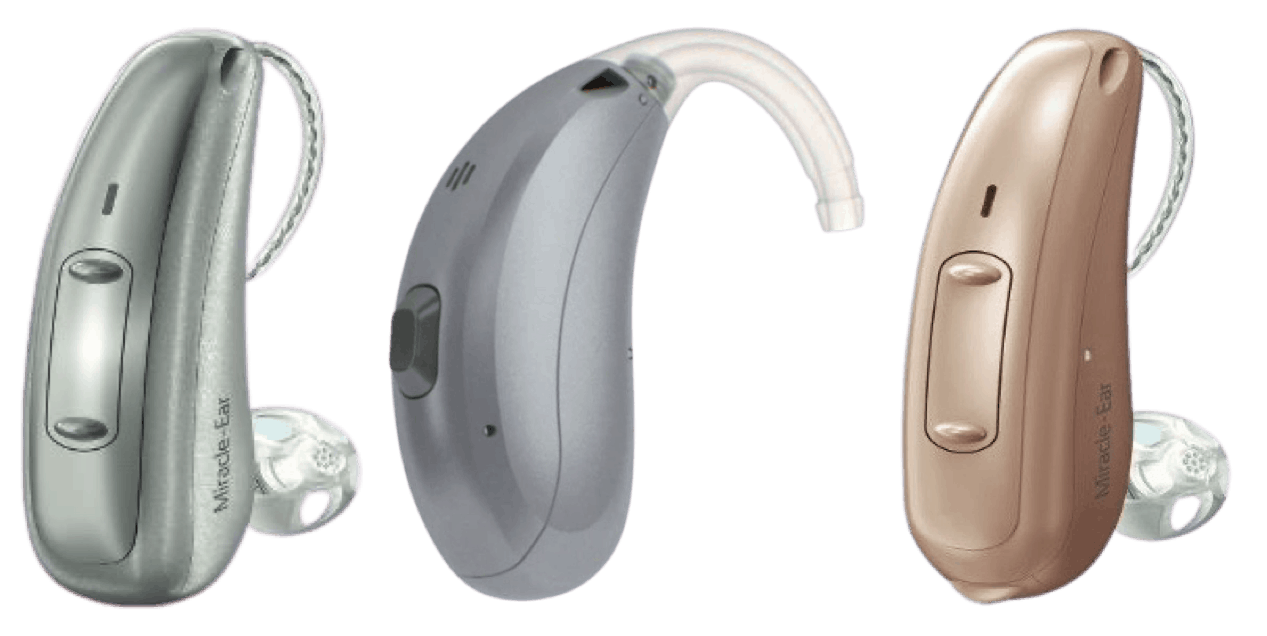Eargo Hearing Aid Review From an Audiologist in 2025
Eargo offers discrete over-the-counter hearing aids with solid sound quality and features, starting at $799 per pair.
Our Methodology: How We Tested and Reviewed Eargo Hearing Aids
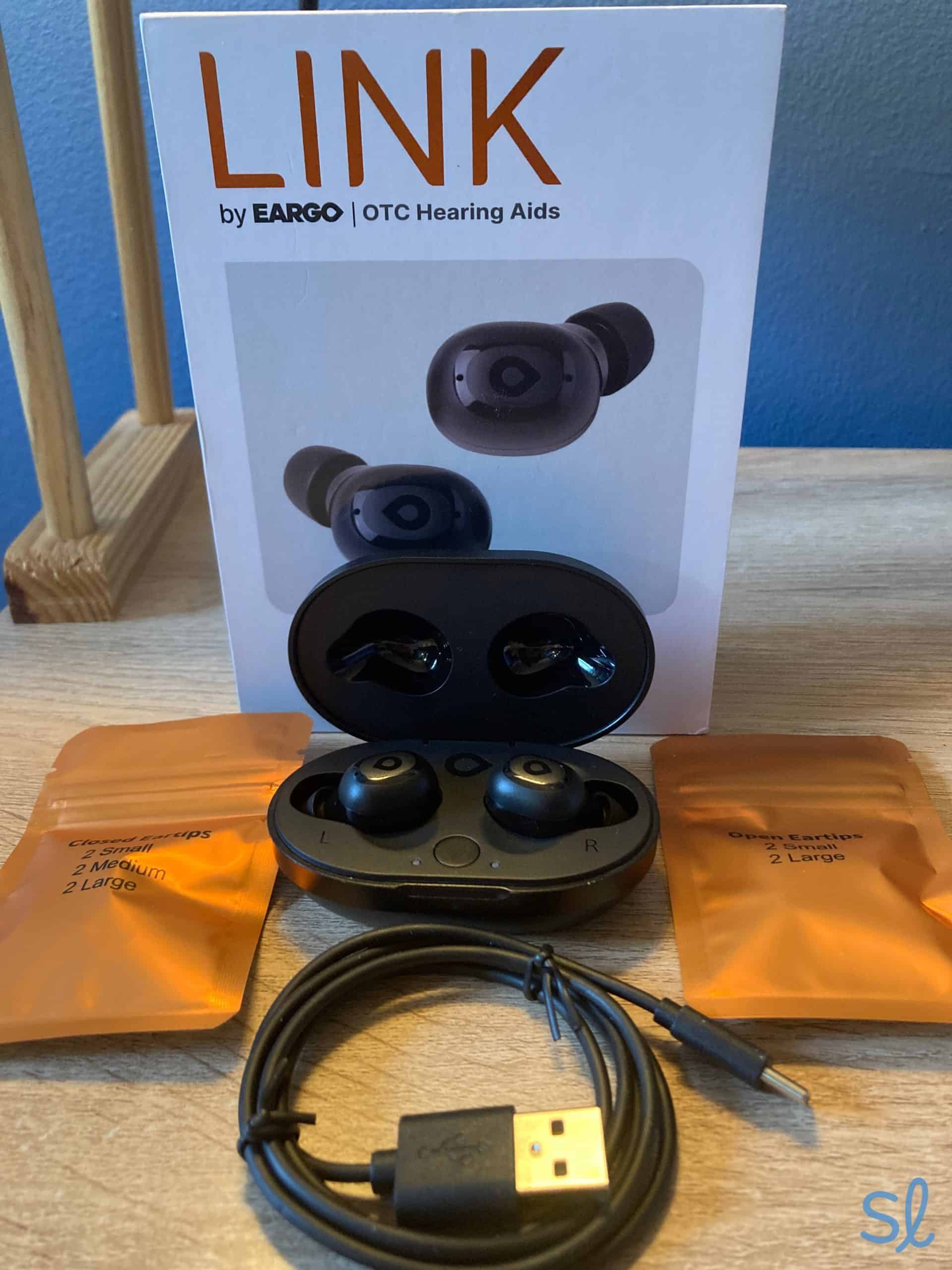
Unboxing the LINK, Eargo’s earbud-style hearing aids
I met with Eargo’s professional team, including staff audiologists, on the phone, via Zoom, and through the app many times to learn more about their devices. They sent me all four Eargo hearing aid models. To learn more about each, I unboxed, set up, and wore them for extended periods. Some of the models were also tested by SeniorLiving.org’s tech experts.
During that time, I assessed ease of use, sound quality, battery life, and adjustability. I used the Eargo apps extensively and monitored the battery life of each device. I also compared Eargo hearing aids to other over-the-counter brands and to prescription hearing aids I routinely recommend to my patients. This in-depth analysis of Eargo enabled me to assess their viability for those with mild to moderate hearing loss.
Here’s what my testing process looked like:
- I started by researching Eargo hearing aids online. I reached out to the company and requested all four styles to test for myself.
- Once I received the hearing aids, I reviewed the external and internal packaging. I unboxed each model, and set them up according to instructions.
- I charged all of the hearing aids and timed the process, so that I could compare my experience to the time estimates for charging provided by the company.
- I downloaded the Eargo app for the Eargo 8 and SE, and synced it to each device. I also downloaded the LINK by Eargo app a
- nd synced the LINK earbud-style hearing aids to it.
- I tried out all of the app’s special features, including the Sound Match hearing test.
- I tried on each pair of Eargo hearing aids and wore them for several days each, over the course of a few weeks. I wore the hearing aids in different sound environments, from quiet one-on-one settings to noisy restaurants.
- During that time, I used the app to make sound adjustments and test out programs. I watched Eargo video tutorial to get a sense of their applicability and usefulness.
I broke down my hands-on experience into the following categories to evaluate Eargo:
- Price and value: Eargo hearing aids are significantly less expensive than comparable prescription hearing aids. They’re more expensive than some OTC brands, but in my opinion, their sound quality, technology, and discretion make them well worth the money.
- Discretion: Eargo hearing aids are discreet in size and style. Eargo hearing aids are either practically invisible or mimic earbuds that no one would think are actually hearing aids.
- Battery type and life: Eargo hearing aids run on rechargeable batteries. For older adults with hand dexterity issues who can’t handle tiny batteries, this is a big plus. I like Eargo’s very small charger cases. Like their discreet styling, this eliminates a barrier that some people have to using and carrying hearing aids.
- Sound quality: After using my devices in several environments and adjusting the settings as needed, I assessed their sound quality. I also compared them to my experience with other OTC and prescription brands.
Eargo is an over-the-counter (OTC) hearing aid brand that offers four in-ear hearing aids starting at $799 per pair. For this review, I tested the Eargo SE, Eargo Link, and Eargo 8, the brand’s most recent offering. I took Eargo's online hearing screening and spoke with several of their audiologists for about an hour per session. I also had several interactions with their highly professional support staff, who couldn’t have been more helpful.
From my experience, I found a lot of what Eargo is doing to be very helpful and innovative, and they were kind enough to provide us with samples of their product for this review. Keep in mind, Eargo is not for people with severe-to-profound hearing loss or for those who need Hearing Assistive Technologies like telecoil.
Eargo has done a nice job focusing their products on first-time users with early-onset hearing loss who like the convenience of buying hearing aids on their own. I give Eargo's prices, sound quality, and convenience a thumbs-up. Read on for a look at my experience with Eargo and to learn why the company made our list of the best hearing aids in 2025.
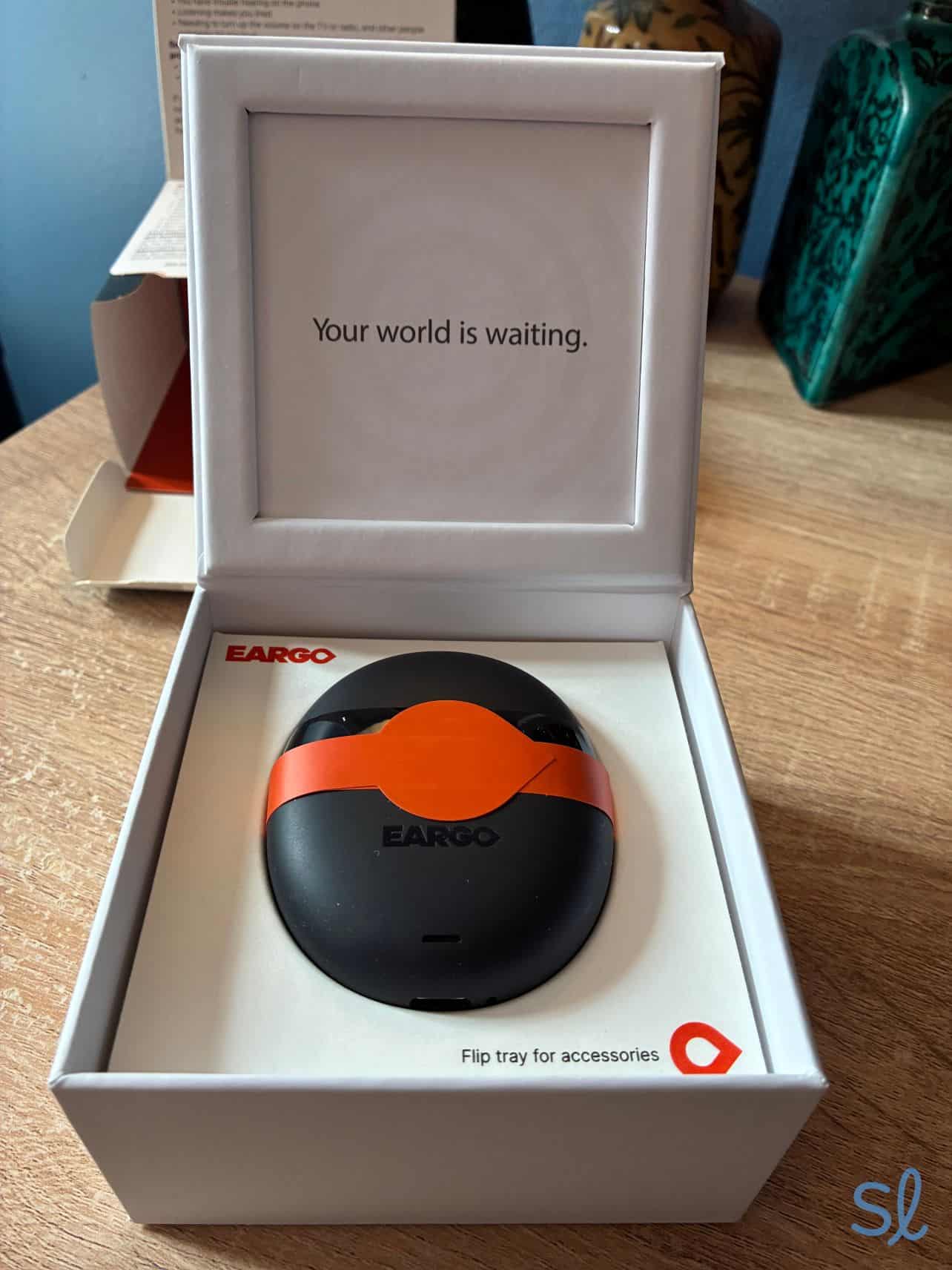
Unboxing Eargo's latest model, the Eargo 8

Eargo Pros
- Discreet unnoticeable designs
- Three completely-in-the-canal (CIC) models
- One earbud-style model
- Available online and in select stores
- No in-person appointment required
- 45-day risk-free trial
- Lifetime remote support
- Free online hearing test
Eargo Cons
- Some styles may not be comfortable for smaller ears
- Not suitable for severe or profound hearing loss
- No behind-the-ear models
- Only one style offers Bluetooth streaming
- Eargo app requires newer model phones
- Hearing screening results only available via email
Taking Eargo’s Online Hearing Screening
Like all OTC hearing aids, Eargo hearing aids don’t require an in-person visit to a practitioner’s office. Instead, you take a hearing test online, and begin the process of getting hearing aids through the Eargo website.
Eargo’s remote hearing care professionals will select the configuration most likely to meet your needs after reviewing your online hearing screening and talking to you about the results. Eargo will then ship the hearing aids you choose directly to you. Once you receive them, you can make adjustments to your settings if needed.
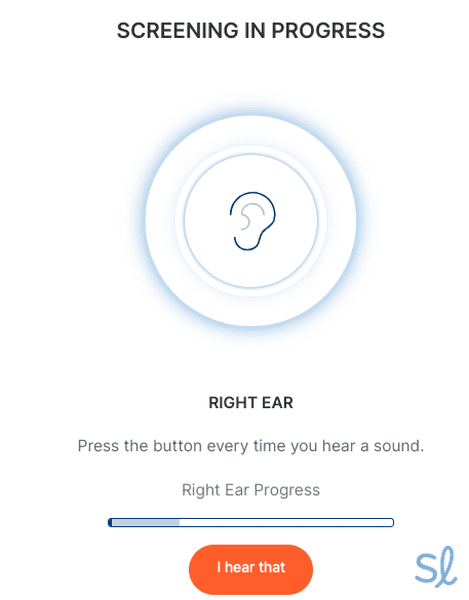
Screenshot of Eargo’s online hearing test
Eargo has a smartphone app that you can use to customize your sound preferences. If you'd rather have an expert assist you, like with Jabra, another OTC hearing aid manufacturer, Eargo offers the option to remotely program the devices in a “telemedicine” format.
Did You Know? Many American adults with hearing loss don’t get hearing aids because they think their hearing loss isn’t “bad enough” to warrant correction. This can exacerbate underlying conditions, like tinnitus.1
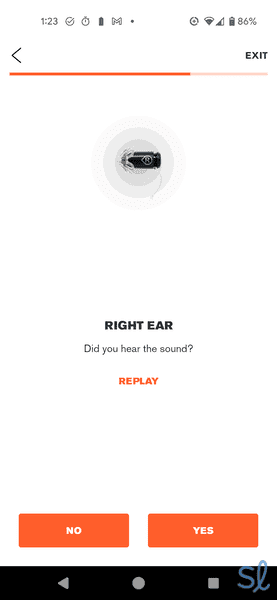
Screenshot of Eargo’s in-app SoundMatch test
During my conversation with Eargo’s in-house personnel, I asked them what happens if a person’s hearing loss is not quite right for their hearing aids. They were emphatic that they only want to fit individuals who will succeed, and they refer people who fall outside their lane to a partner audiologist for a more traditional hearing evaluation. They may also request a copy of a traditional hearing test before making a final decision on candidacy.
If you're new to hearing aids and hearing tests, visit our 2025 hearing aid buyer's guide to learn everything you need to know before purchasing a pair of hearing aids.
Comparing Eargo Hearing Aids
| Eargo model | Price per pair | Style | Warranty | Battery type | Water-resistance | Bluetooth streaming |
|---|---|---|---|---|---|---|
| LINK by Eargo | $799 | Earbud | 1 year | Rechargeable | Splash-resistant only | Yes |
| Eargo SE | $1,699 | CIC | 1 year | Rechargeable | Splash-resistant only | No |
| Eargo 8 | $2,699 | CIC | 2 years | Rechargeable | Yes | No |
Testing Eargo Hearing Aids
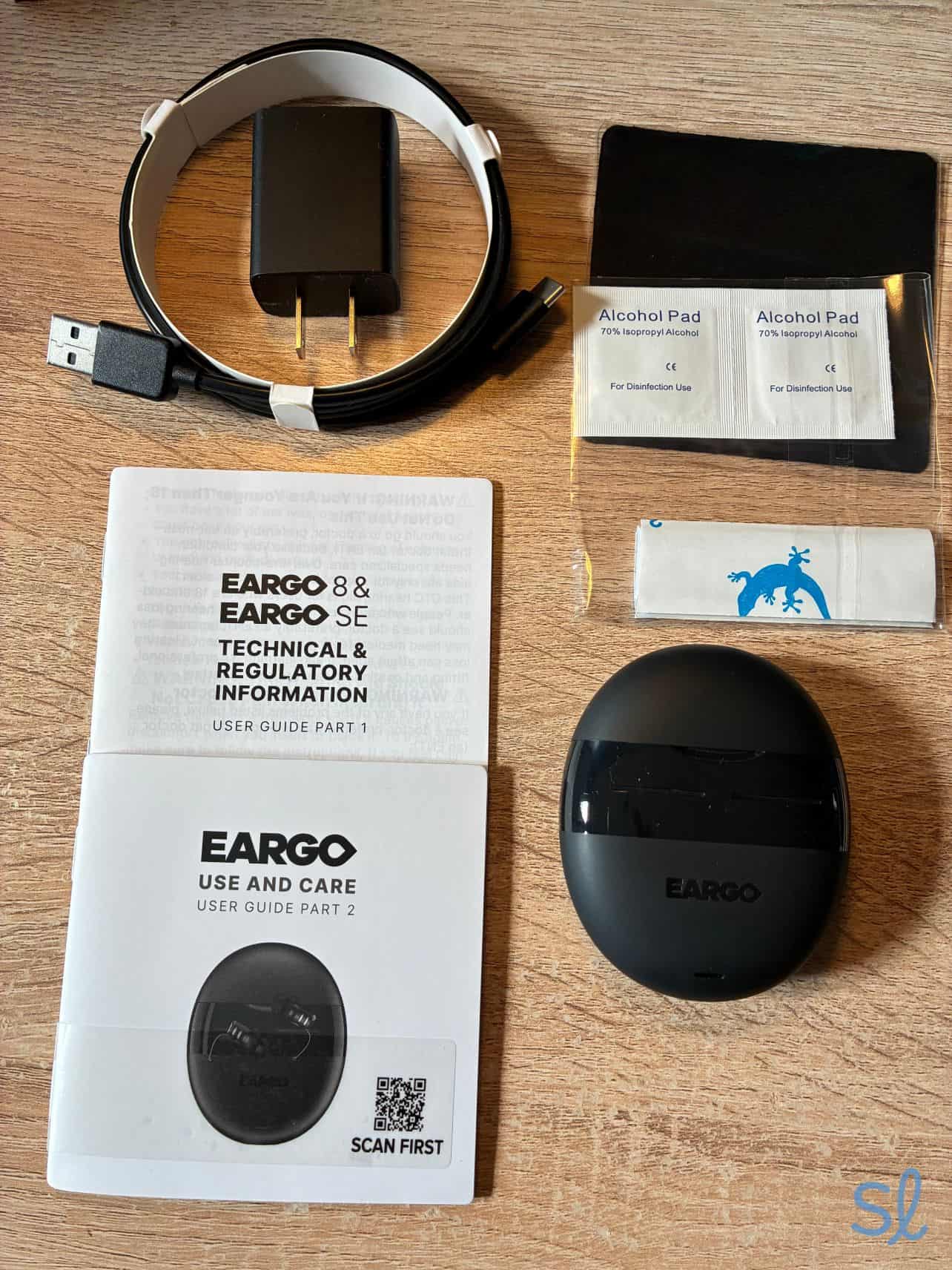
Unboxing the Eargo 8 devices
Unboxing My Devices
The Eargo audiology team was kind enough to send me several pairs of Eargo hearing aids, including Eargo 8 and Eargo SE hearing aids to try. Eargo 8 is Eargo’s most technologically advanced hearing aid. It is also one of Eargo’s more expensive models.
The pre-delivery communication was excellent, including a recommendation that I have my ears cleaned so wax would not interfere with the fitting. I also received shipping updates and a delivery confirmation.
The Eargo 8 packaging was well-designed and efficient. One of my pet peeves is over-boxing, but Eargo’s box is just big enough to hold all the components and documentation. Plus, it offered instructions as you opened the package so that you know what to do each step of the way.
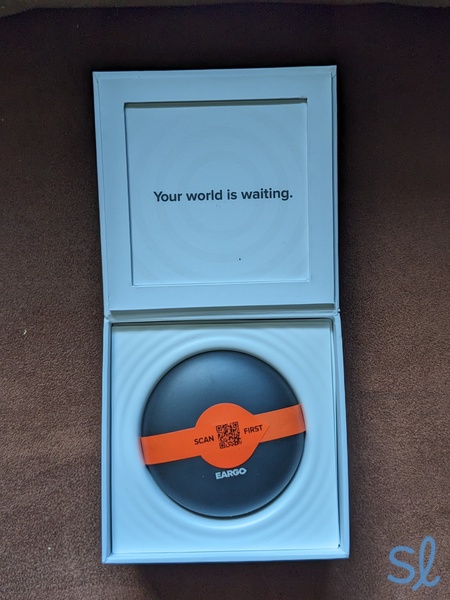
Simple instructions like “scan first” make Eargo unboxing and set up a breeze.
Right away, I noticed the sleek look of the charging case and the hearing aids. They are cool and modern! Even though the devices are very small, the right and left markers are large and clear, which is great for seniors with vision loss. In my 30 years of fitting hearing aids, I’ve found that a common issue with new users is getting the devices in their ears correctly, so this is a big help.
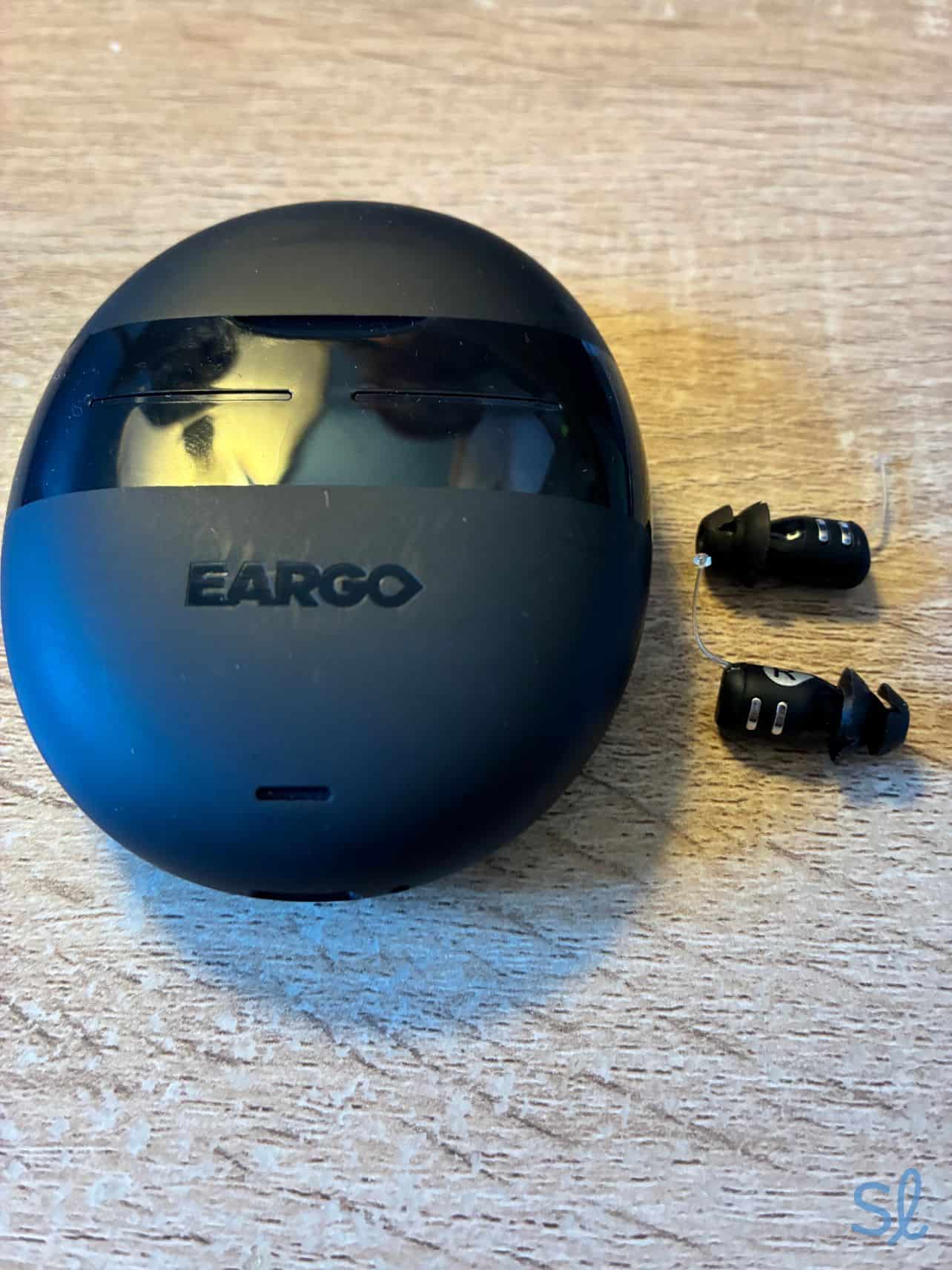
The Eargo 8 devices and their charging case
Using the Eargo App
Once I unboxed the Eargo devices, I downloaded and installed the smartphone app (I use an Android device, but it’s also available for Apple devices). Below are a few screenshots to give you an idea of how the app looks. I found the app to be intuitive, cleanly designed, and functional. I was able to connect and set up the hearing aids in under 10 minutes (after first charging them for several hours).
Did You Know? Adult men are almost twice as likely as women to have age-related hearing loss (presbycusis).2
You can use the app to have an Eargo audiologist fine-tune your hearing aids if you’re still struggling after wearing them for a week or two. To check it out, I scheduled a video call with an Eargo professional through the mobile app. I had no trouble finding a time that worked for me.

Schedule a video call with an Eargo Hearing Professional within the app
Eargo’s approach may be best for people who are comfortable with technology. That said, Eargo provides support for less tech-savvy older adults.
The Details: Eargo Hearing Aid Models
The Eargo comes in three levels of technology, all built into rechargeable, in-the-ear-style hearing aids with either inductive or contact charging for optimal power.
LINK by Eargo

Unboxing the LINK, Eargo's earbud-style hearing aids
LINK by Eargo is the most affordable option. It costs $799 for a pair or $26 per month with financing options. This is an earbud-style device instead of the CIC designs of Eargo’s pricier products.
It features Bluetooth 5.3 technology, so you can take calls and listen to music directly in your hearing aids from your phone. LINK sound quality is on par with other OTC brands I’ve tried. It comes with an extra supply of open ear tips in small and large, and closed ear tips in small, medium, and large. You can play around with the different styles and sizes, to see what gives you the best sound quality and most comfortable fit.
While it’s not invisible, LINK by Eargo is discreet — it looked like I was just wearing ordinary earbuds instead of hearing aids! Eargo LINK is a good option for anyone with mild to moderate hearing loss who wants to keep that secret from the world. It’s also a great choice for those who enjoy listening to music or podcasts on-the-go.
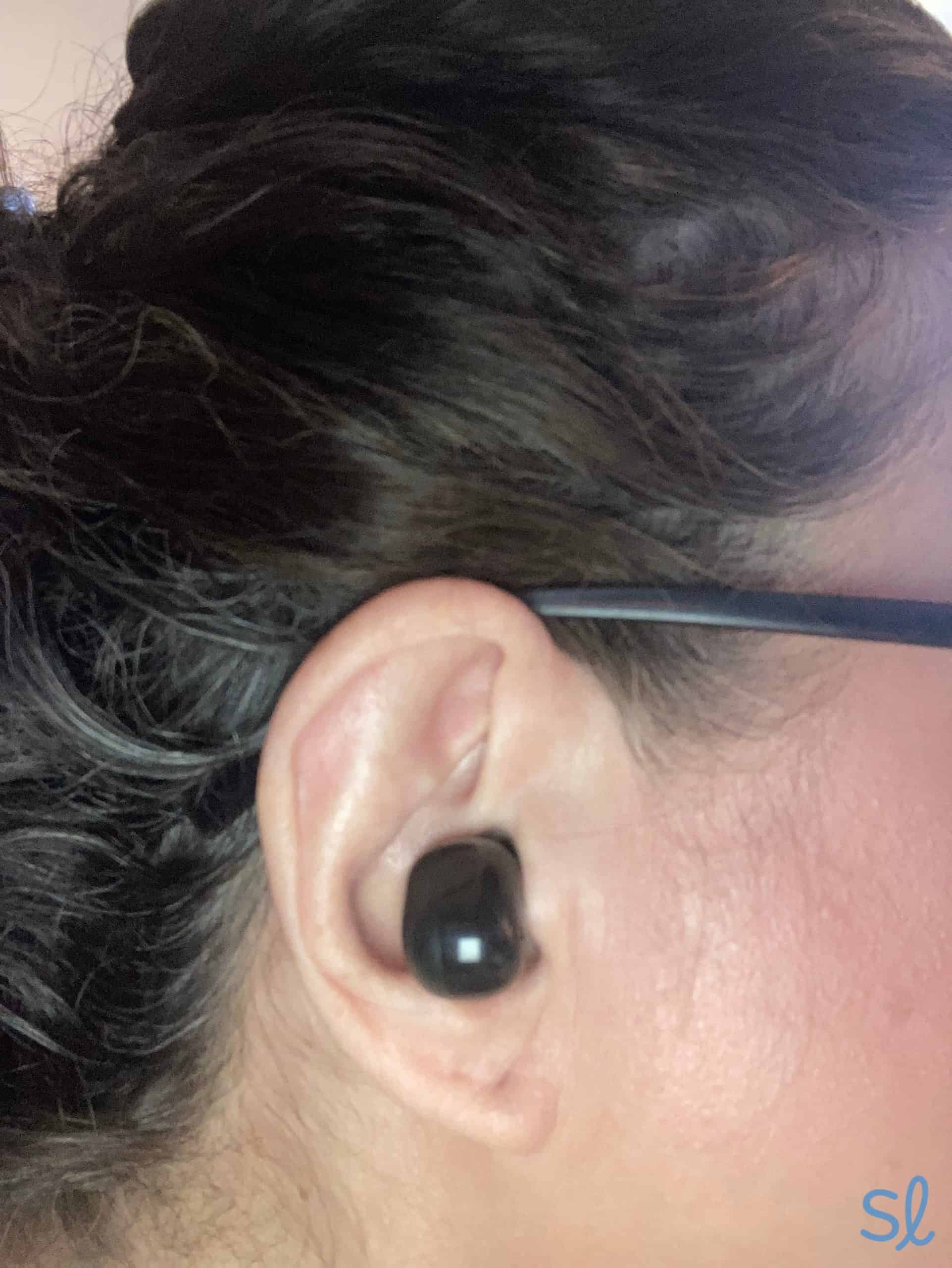
One of our testers wearing LINK by Eargo hearing aids
Plus, the device has active noise and feedback cancellation for an easy hearing experience and comfortable phone call streaming.
While it doesn’t feature customizable settings like the more expensive models, LINK has four preset listening programs to choose from.
The LINK’s downfall, in my opinion, is that they only hold a charge for up to 16 hours. If you do a lot of streaming, they may lose power in less time. The LINK by Eargo app is available for iOS and Android devices.
Eargo SE
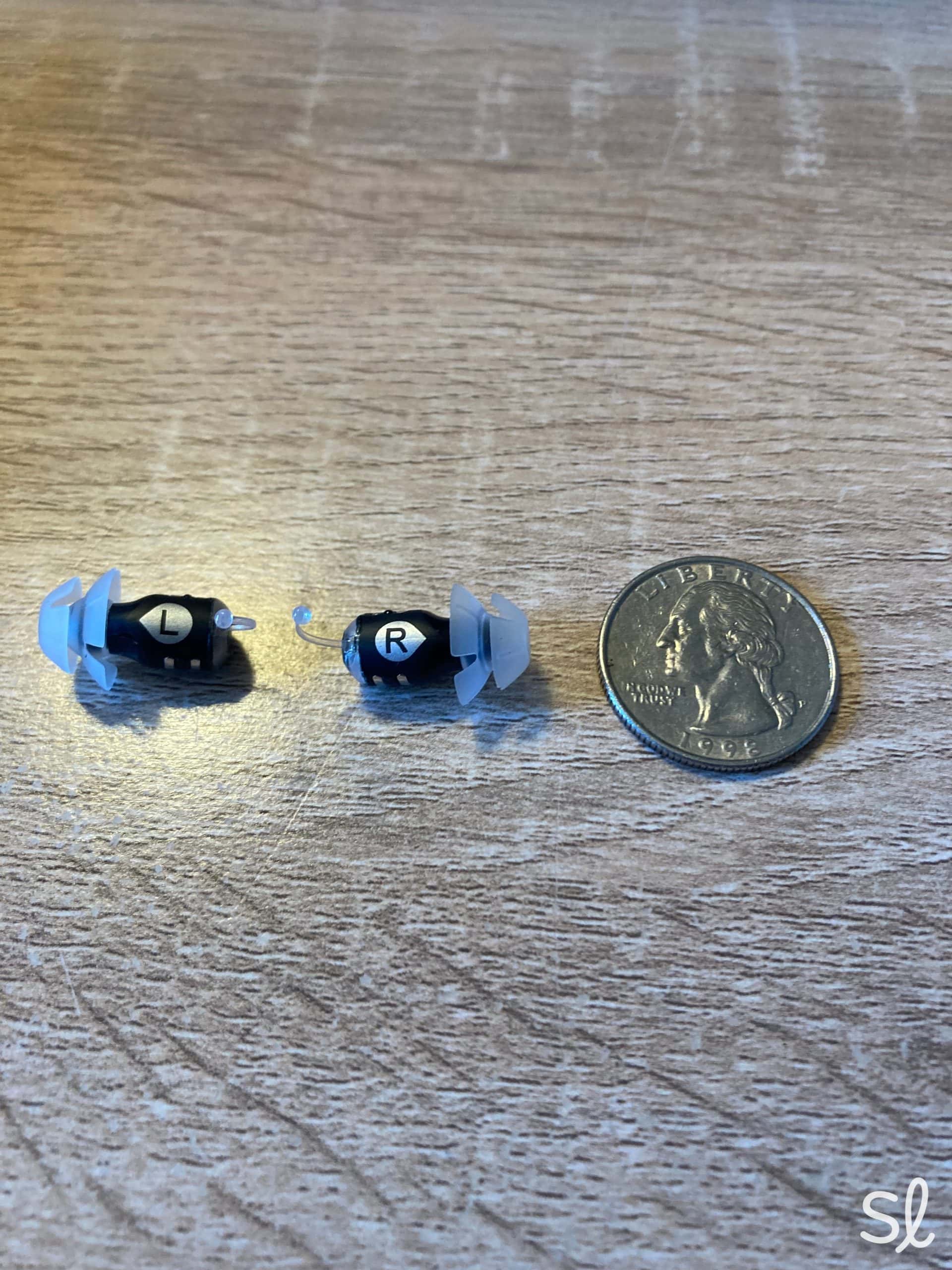
Eargo SE hearing aids are small and fit in the canal, making them very discreet.
Eargo SE is compatible with Eargo’s mobile app, so adjusting and personalizing your hearing aids on the go is a breeze. You’ll need a fairly new phone in order to sync up your hearing aids to the app. The app is compatible with Apple phones running iOS 15 or later. Even though they meet operating system requirements, iPads aren’t able to support all of Eargo’s app features. If you have an Android phone, the app will be compatible if your device is running Android 7 or later.
The Eargo SE is a mid-tier model priced at $1,699 per pair, or as low as $55 per month with financing. For an additional $300, you can purchase Eargo Care, which provides additional enhancements, including a one-on-one educational session, expedited support, 12 extra ear tip pairs, and an additional one-year product warranty.
Eargo SE devices are discreet and practically invisible. This model comes with four preset listening programs, lifetime support, a one-year warranty, and a 45-day return window. The charging case provides five full charges of up to 16 hours of sound. They have great sound quality and noise-reduction capabilities for a clearer hearing experience.
I also love the tiny charger case Eargo SE comes in. You can easily transport these in your back pocket or a small bag.
Did You Know? Untreated mild hearing loss is a risk factor for dementia in older adults.3
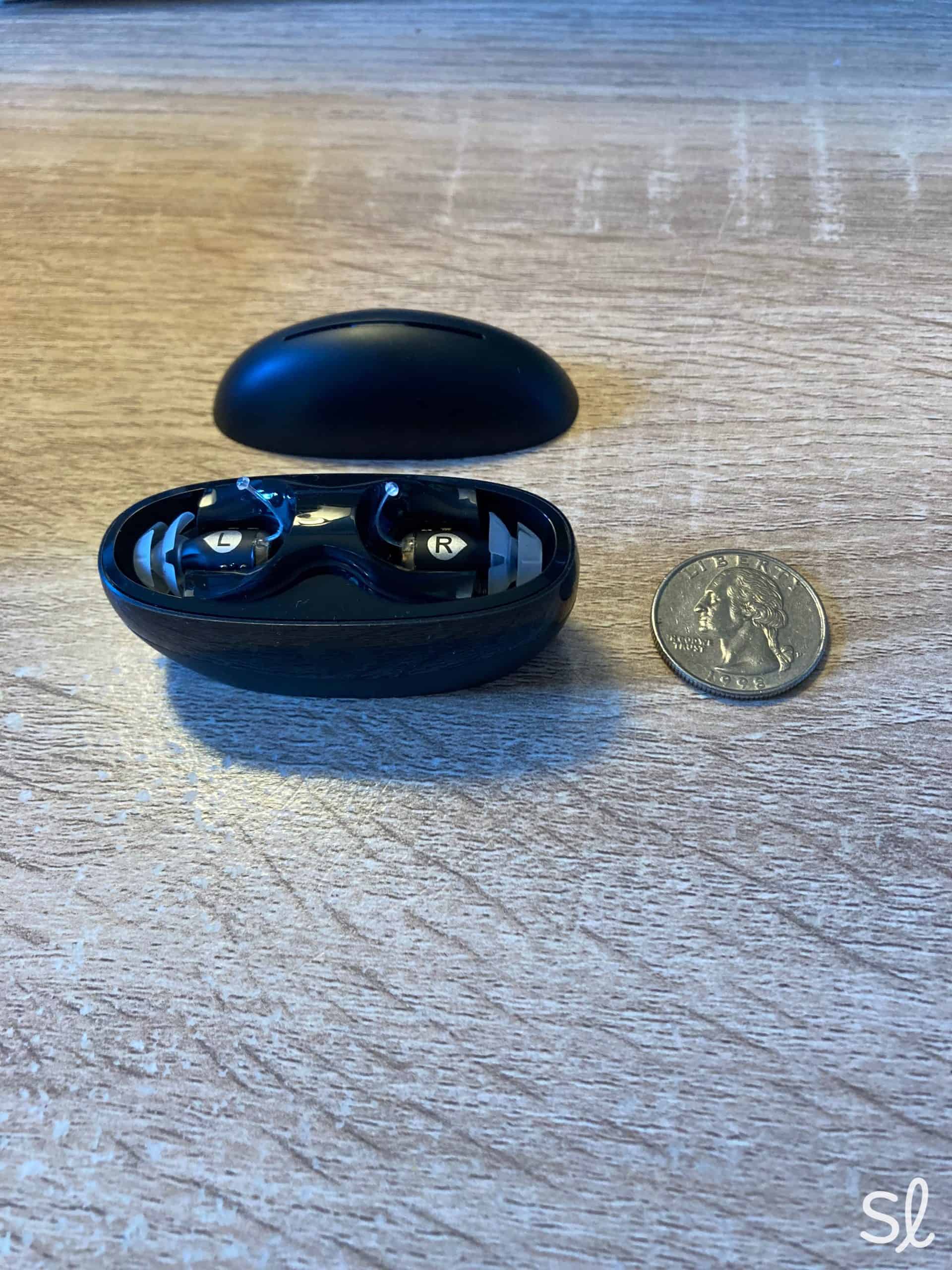
Eargo SE's charging case is small and portable.
FYI: Struggling to find room in your budget for a new pair of hearing aids? Check out our guide to building a budget for useful tips.
Eargo 8
Eargo 8 is the brand’s most recent and technologically-advanced model. It’s also the brand’s most expensive model at $2,699 or $88 a month with financing. Like Eargo’s previous model, the Eargo 7, Eargo 8 is a completely-in-canal (CIC) design which is nearly invisible. Eargo 8 produces HD sound. When I tried out Eargo 8, I found the sound quality to be very sharp, although it had a metallic cadence that took a little while to get used to. Once my ears adjusted, I found the sound quality to be natural and crisp.
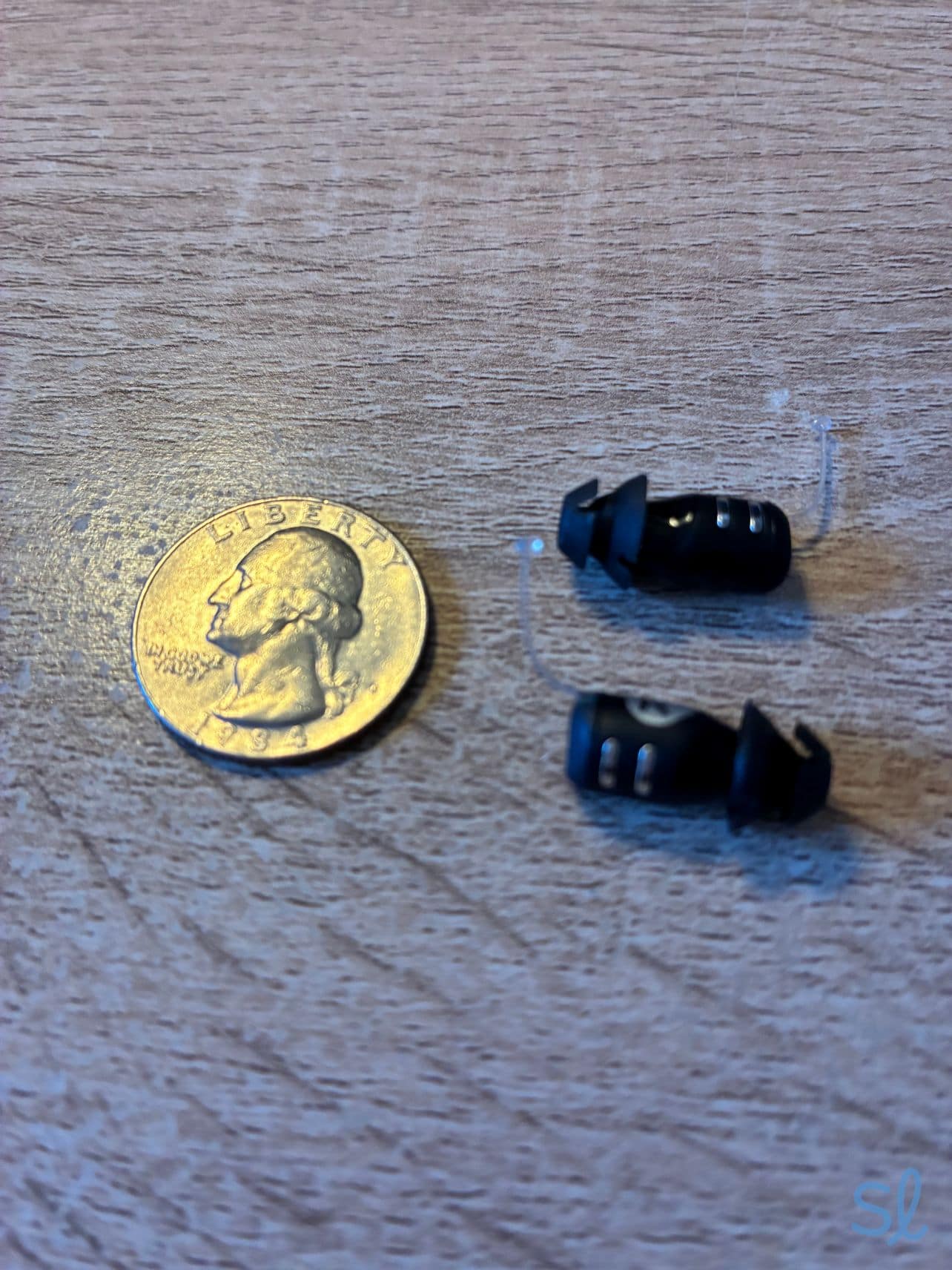
Testing out the Eargo 8
Eargo 8 comes equipped with Smart Sound Adjust technology, which automatically analyzes your sound environment and adapts to the noise level surrounding you. Imagine walking into a noisy restaurant from a quiet street or finding yourself in a windy environment where conversations are hard to follow. Eargo 8 wearers will be able to keep up with the sounds around them, while experiencing less strain or discomfort from changing sound environments.
I took Eargo 8 out on a test drive and found that Smart Sound Adjust did exactly what it is designed to do. I live in a noisy city, where sirens and construction sounds can suddenly make following conversations challenging. Eargo 8 enabled me to continually engage with friends while walking down the street.
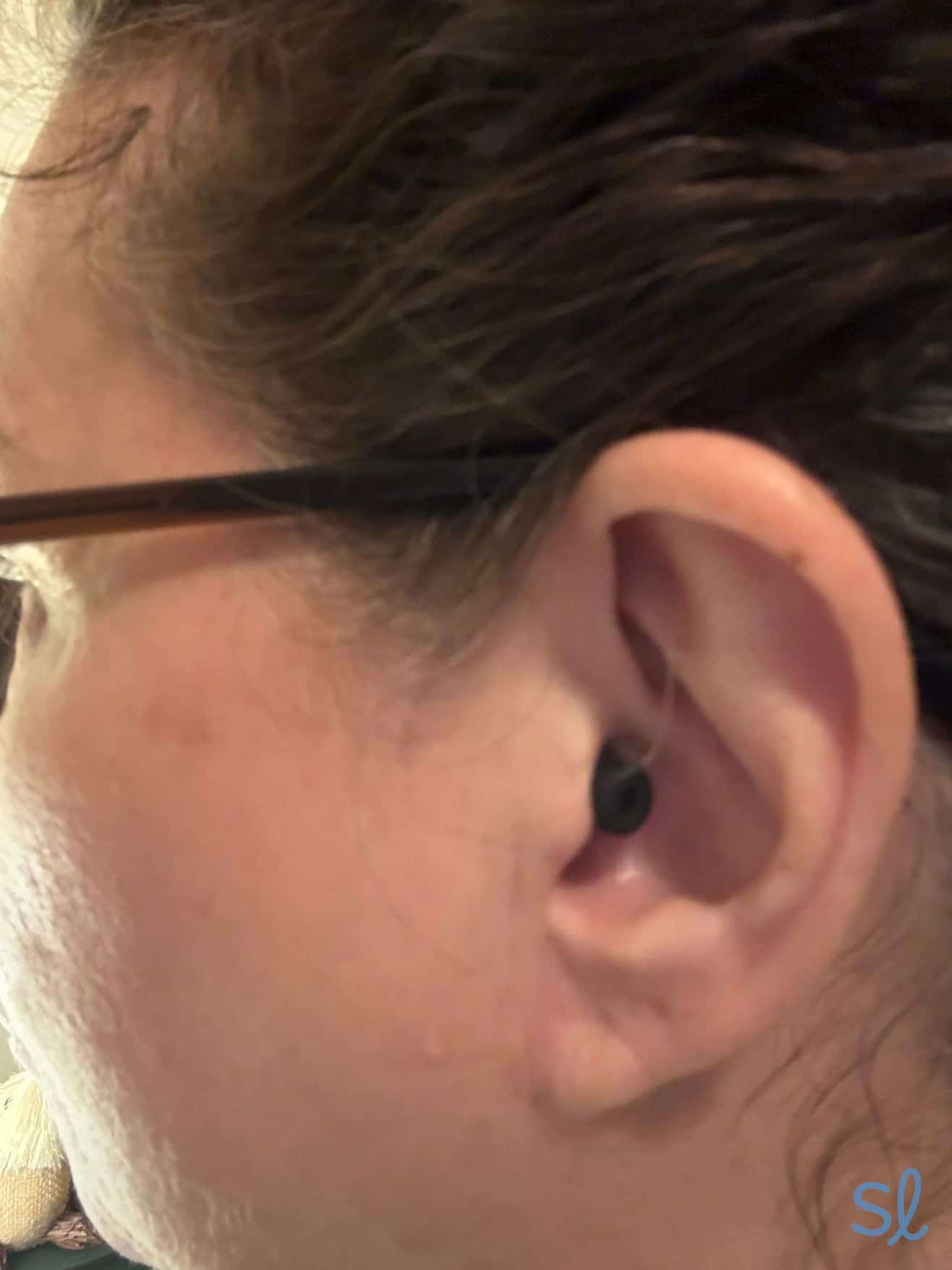
Wearing the Eargo 8
Eargo 8 also comes equipped with Device Scan, a new, patented technology that keeps an “eye” on the health of your devices. Device Scan alerts you to any maintenance needs that your hearing aids might have, such as the need for cleaning.
This model also comes equipped with four pre-set programs that vary in volume. You don’t need to connect to the app to alter these programs; I could use the tap method to adjust the volume directly on my hearing aids.
However, I found that you get the most bang for your buck when using the app to activate Sound Match. By pairing your hearing aids to the app, you can choose from several programs that are tailor-made to your specific hearing needs. I chose TV, music, and restaurant programs.
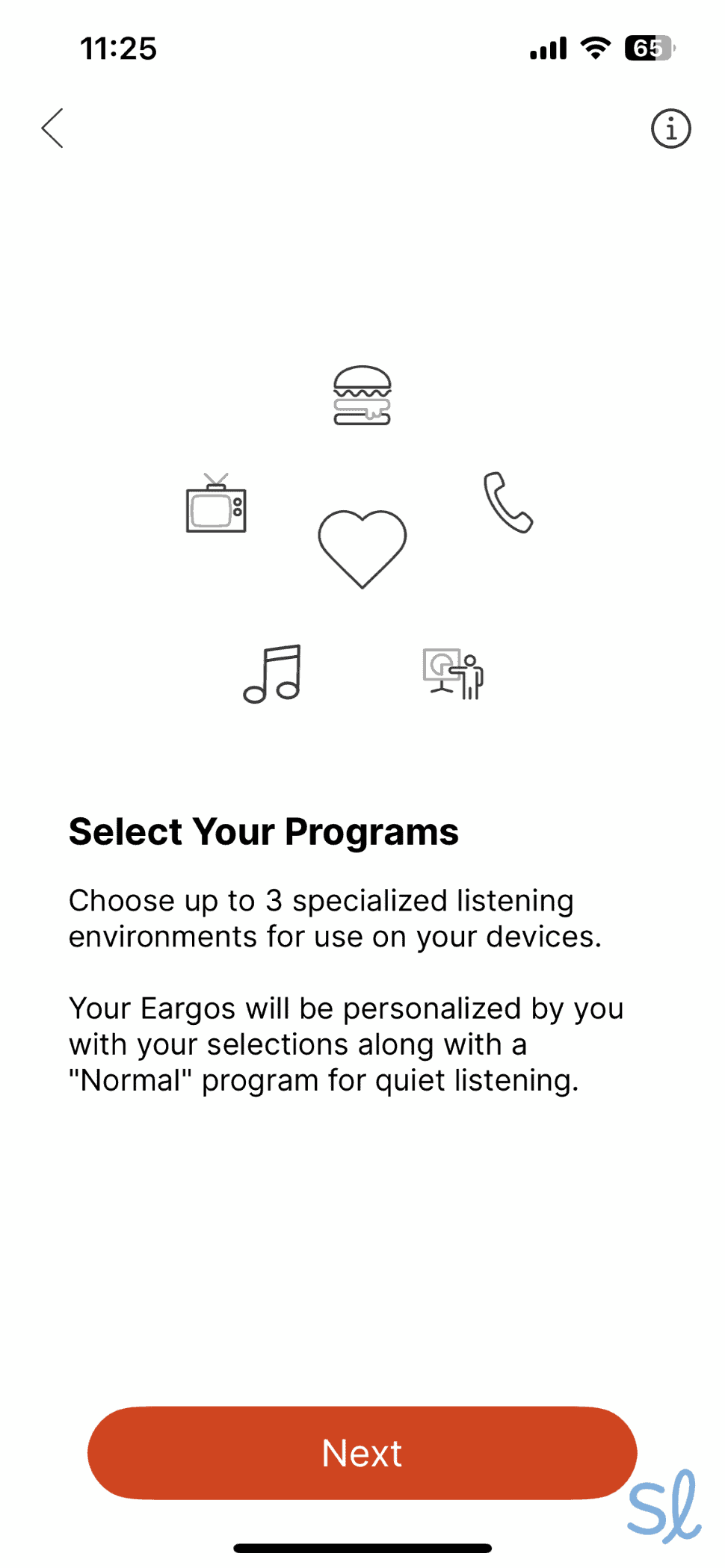
Selecting my preferred programs in the Eargo app
Customer Service
Every Eargo customer is paired with a personal hearing professional who will provide you with lifetime support for your product. I received a welcome call when I first got my hearing aids so that all of their functions could be explained to me. I could also reach out to this person as needed, for the life of my hearing aids. Consultations and hearing checks are done remotely from the safety of your home — or wherever you happen to be when you need assistance.
There are video tutorials available online 24/7 as well as a customer service line that is staffed Monday through Friday from 9 a.m. to 9 p.m. ET. Plus, the Eargo app comes with helpful tutorials, videos, and FAQs. I found the videos to be succinct and helpful. You will find information about everything from programming to cleaning your devices.
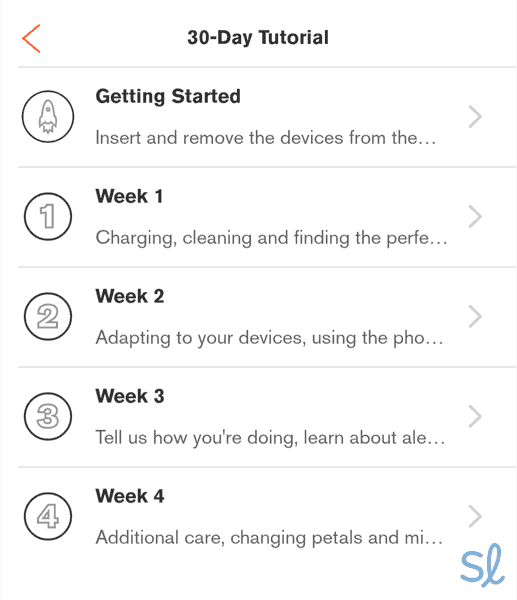
30-day tutorial program inside the Eargo app
All hearing aids come with a 45-day return policy if you're not 100 percent satisfied. Hearing aids have a learning curve, and it can take a month to really get used to wearing them. Many manufacturers only offer a 30-day return option, so the added weeks may potentially be a money-saver for you if the hearing aids don’t work out. Depending on the model you purchase, the hearing aids come with a one- or two-year warranty covering any manufacturer defects.
Buyer's Tip: If you are a federal employee, you may be eligible for Eargo hearing aids through the Federal Employees Health Benefits (FEHB) program.
Eargo vs. Other Hearing Aid Brands
As you shop for OTC hearing aids, it’s important to compare your options. I’ll break down how Eargo compares to some of our other favorite brands below.
| Eargo | MDHearing | Jabra Enhance | |
|---|---|---|---|
| How to buy | Online and in select stores | Online | Online |
| Hearing loss level | Mild to moderate | Mild to moderate | Mild to moderate |
| Cost range per pair | $799 – $2,699 | $297-$597 | $995-$1,795 |
| Warranty/Risk-free trial period | 1-2-year warranty, 45-day risk-free trial | 1-year warranty, 45 day risk-free trial | 1-3 year warranty, 100-day risk-free trial |
Jabra Enhance
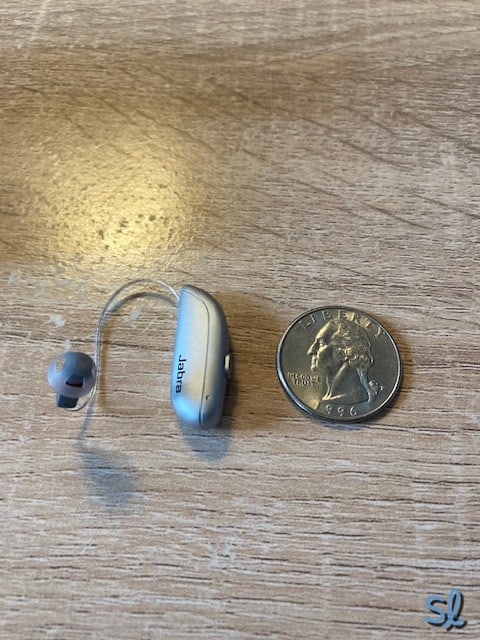
Jabra Enhance Select 300 hearing aids
Jabra Enhance hearing aids are in the same financial ballpark as Eargo. Their least expensive hearing aid, the Enhance Select 50R, ranges in price from $995 to $1,195, based on the package you choose. Their most expensive model, the Enhance Select 500, ranges from $1,795 to $1,995.
Unlike Eargo’s CIC and earbud hearing aids, Jabra Enhance hearing aids come in micro, mini, and standard receiver-in-canal and behind-the-ear styles. Some of my patients prefer the feel of this type of hearing aid, so I recommend trying on a couple pairs of both RIC and CIC types, to determine what you like best.
Like Eargo, Jabra Enhance’s Premium packages offer ongoing professional support with a hearing specialist. If you opt into a package that provides this personalized care, you’ll need to be comfortable attending Zoom meetings.
Jabra Enhance also offers Basic Packages for each model that cost $200 less than Premium options. Basic packages don’t come with follow-up care. If you choose one of those, you’ll program and fine-tune your hearing aids on your own through the Jabra Enhance app, similar to Eargo.
Head to our Jabra Enhance review to learn more.
MDHearing
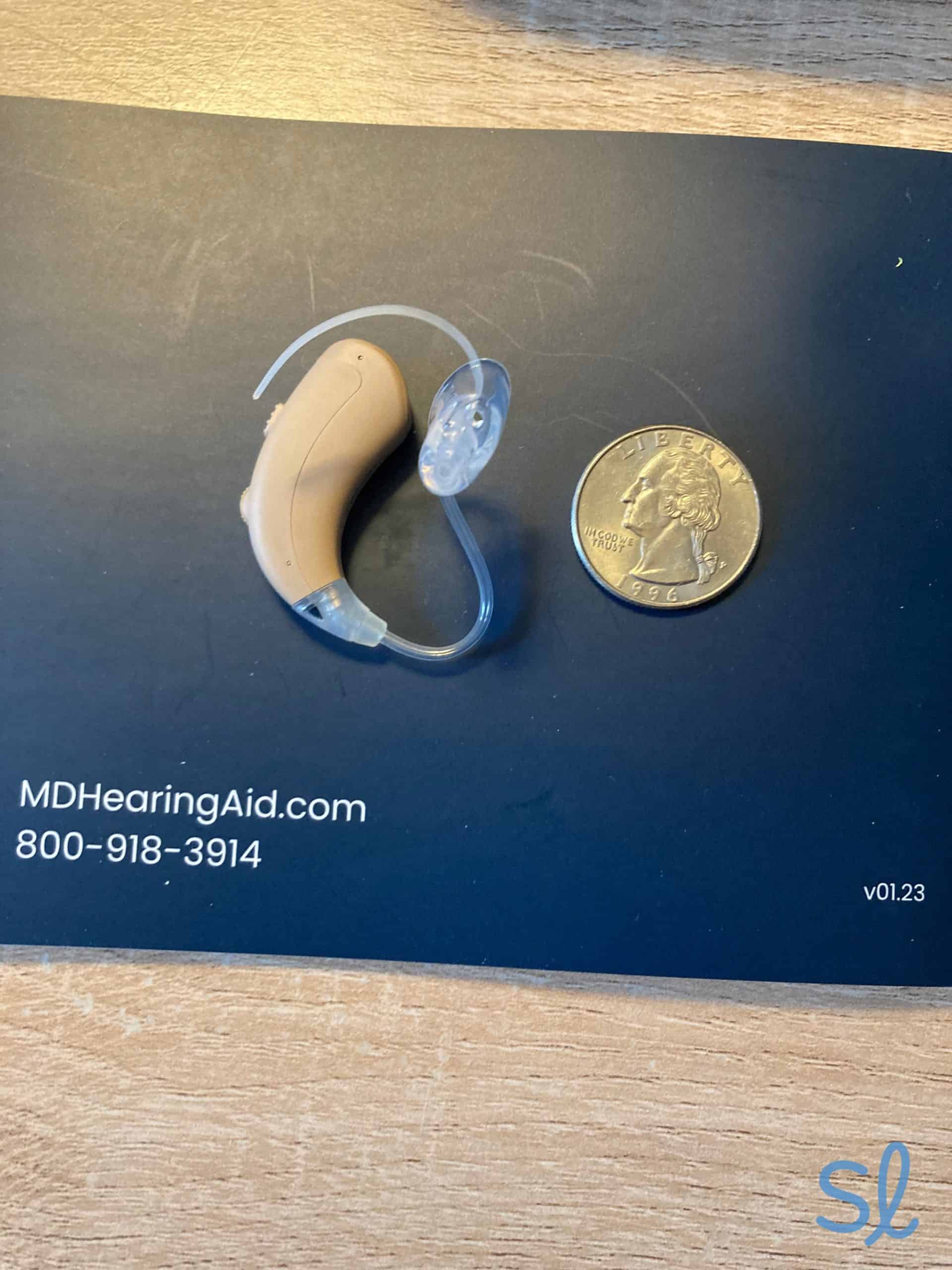
Testing out MDHearing's VOLT devices, which are small and sit behind the ear.
MDHearing is a budget-priced option for behind-the-ear and completely-in-canal rechargeable hearing aids. Their prices range from $297 per pair for MDHearing AIR, up to $597 per pair for MDHearing VOLT MAX.
Five of MDHearing’s models offer four environment settings you can choose between. All four come equipped with varying levels of feedback cancellation and noise reduction. While MDHearing’s devices are inexpensive, they don’t offer the same level of customization and features as Jabra Enhance or Eargo. There is no compatible mobile app and settings are fairly limited. I also found that these devices produce less rich sound than Jabra Enhance or Eargo. But if you’re on a tight budget and price is your main concern, they’re still a solid option.
You’ll be able to contact an audiologist to discuss your hearing aids via email or phone. MDHearing also offers an additional paid-for VIP care level, which includes at-home visits from licensed hearing professionals. This $200 add-on service may be a great benefit for homebound seniors. Given MDHearing’s already low prices, the added cost still keeps them at a very competitive price point.
Read our MDHearing review to learn more about this OTC brand.
Did You Know? Hearing aids reduce the risk of cognitive decline in at-risk seniors by around 50 percent.4
Compare Eargo to Other Providers
Final Thoughts on Eargo
Eargo hearing aids are a discrete, high-tech OTC option for people with mild to moderate hearing loss. They produce great sound quality and hold a charge for up to 16 hours. When coupled with the ability to program them remotely through an app, Eargo devices are worth considering. In my opinion, Eargo has done a good job focusing its product features and configurations on the majority of first-time users with early-onset hearing loss.
I give Eargo a thumbs-up for price and convenience. They appear to have good folks on the support side; they were very helpful and patient with me during my inquiries. Remember that Eargo is not appropriate for more severe hearing loss or for older adults who rely on Hearing Assistive Technologies like telecoils, remote microphones, and media streaming. Eargo is certainly worth looking at if you're in the early stages of hearing loss. Check out my interview with Jeff Hoyt below for more information.
Take Our Free Online Hearing Test
Wondering if you have hearing loss?
Grab your headphones and get an evaluation in minutes.
-
ASHA. (2023). ASHA OTC Hearing Aid Survey.
-
National Institute on Deafness and Other Communication Disorders. (2025). Quick Statistics About Hearing, Balance, & Dizziness.
-
Alzheimer's Society. (2025). Hearing loss and the risk of dementia.
-
Hearing Health Foundation. (2025). Degrees of Hearing Loss.


